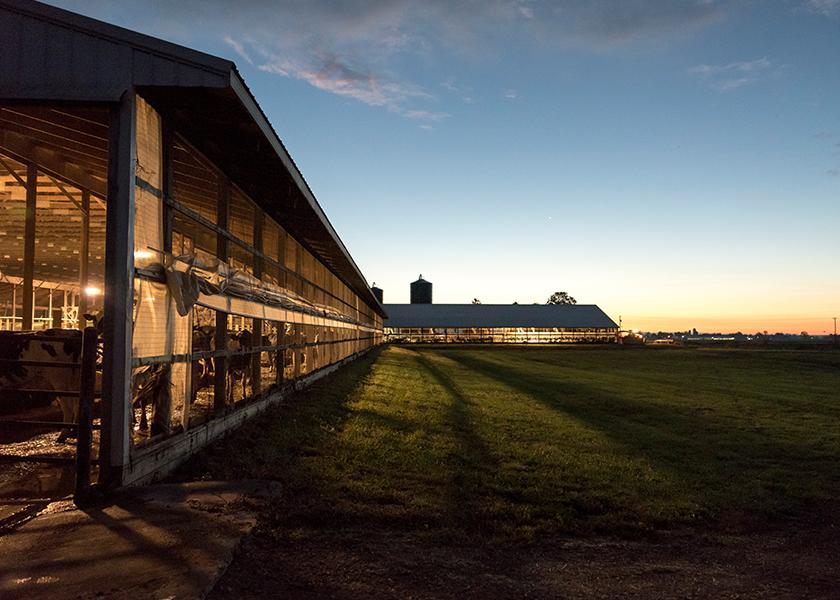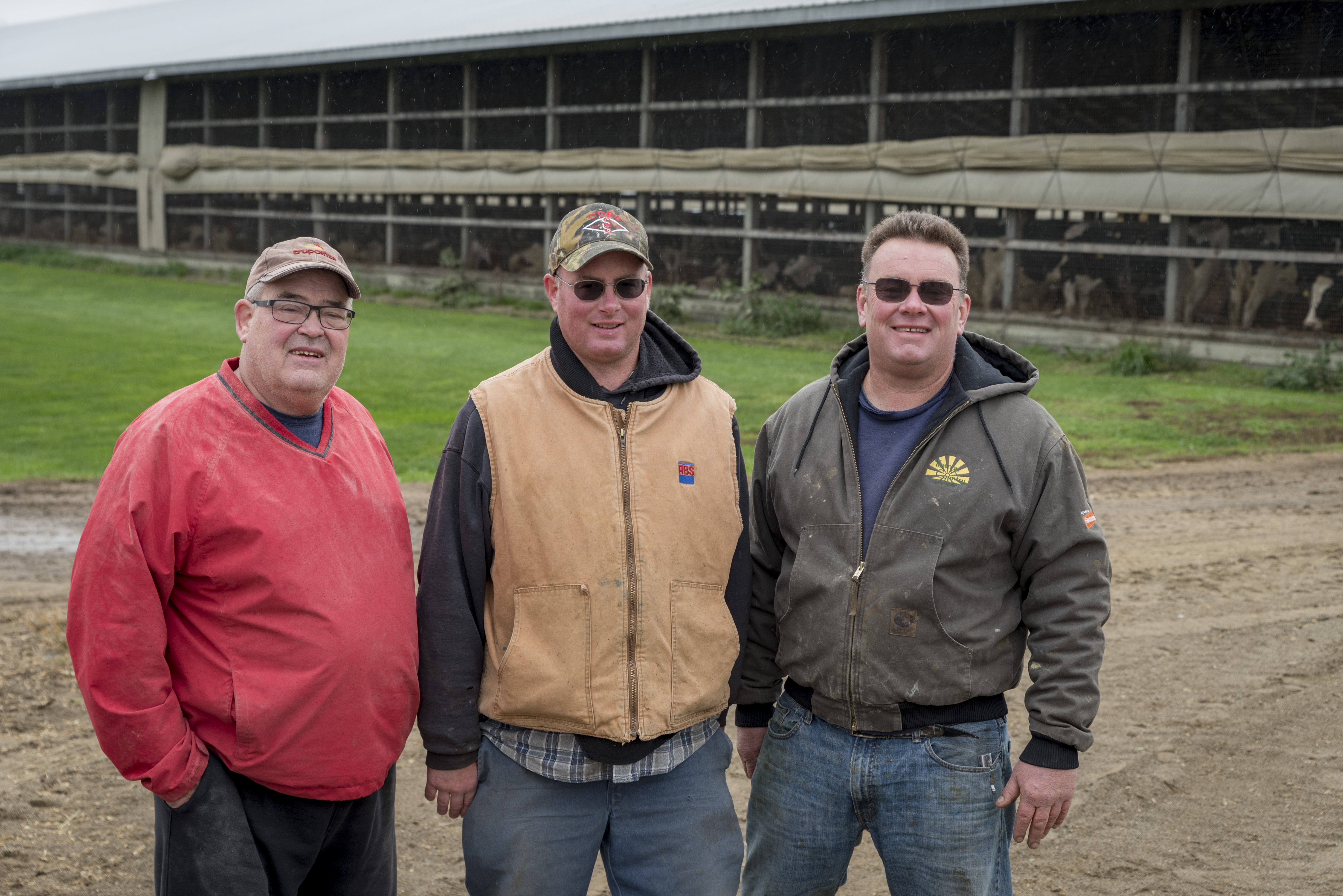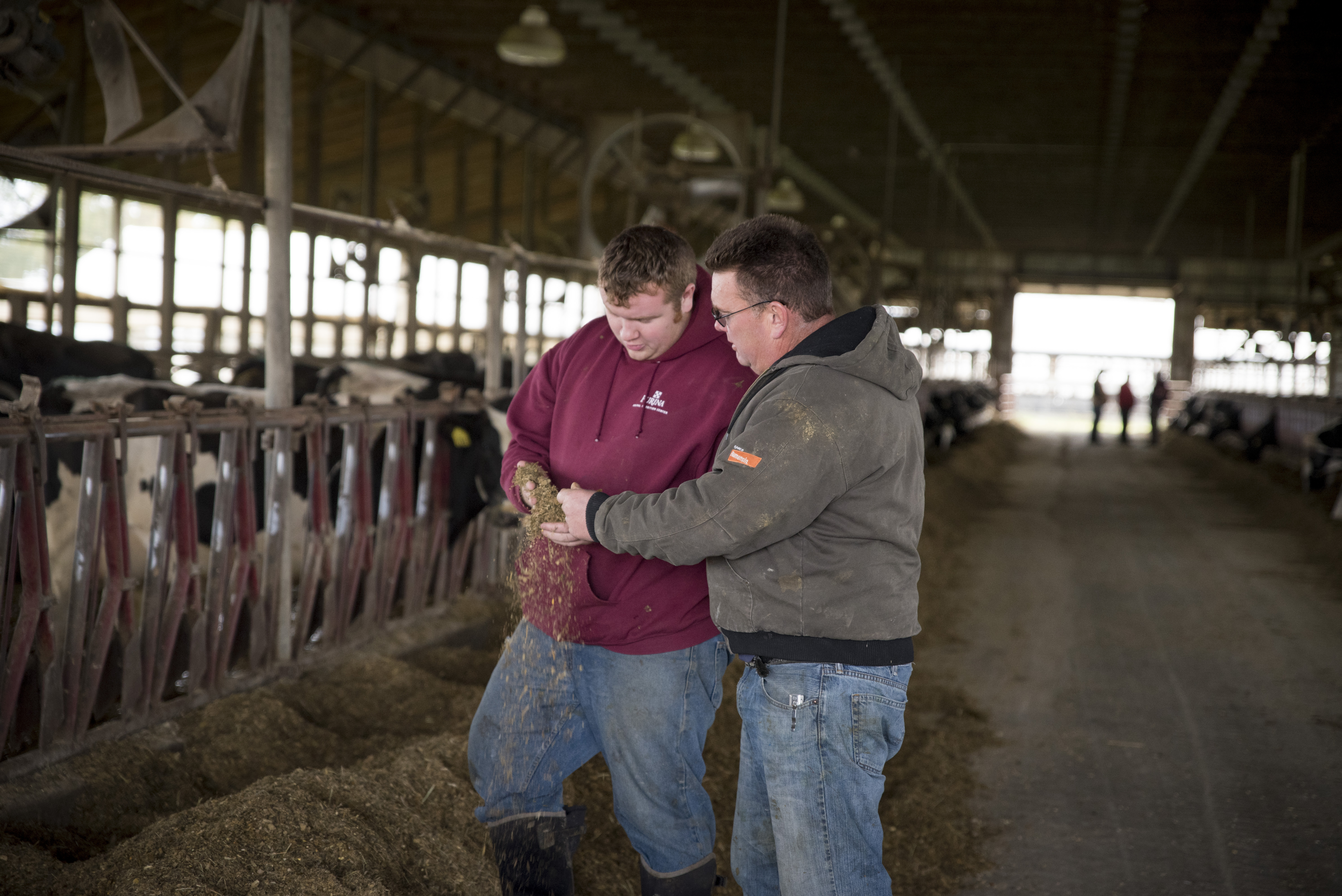Passing the Torch from One Generation to the Next at Steinhurst Dairy

The speech “So God Made a Farmer,” given by Paul Harvey in 1978 to the National FFA Organization, tugs at every farmer’s heart. After all, it is both admirable and an honor when a child wants to be just like their parents when they grow up. Ohio dairy farmers Kurt and Robin Steiner can attest to their brimming pride when it was announced over the loudspeaker on senior football night that their oldest son, Christian, would take over the family farm after he graduated college.
Like many farm kids, Christian, along with siblings, Nicole and Zach, were taught the values of hard work, commitment and sacrifice on their family farm, Steinhurst Dairy, in Creston. Ohio.
When they look across the landscape of their family farm, Christian and his siblings see bountiful blessings.
“You see the animals when they’re born, raised all the way up,” Christian says. “You see God’s creation every day you work outside, and you work with your family.”
Est. 1959
The importance of family runs deep for Christian, who represents the eighth generation of dairy farmers in Wayne County. His grandfather, great-grandfather and great uncles helped established Steinhurst Dairy on their current location in 1959. His father, Kurt, describes his childhood farm as a typical rural Midwestern dairy.
After graduating from Ohio State in 1988, Kurt decided to head west to California to take a job with Cargill. He worked there for two years before landing another job with a big chemical company, but deep down, Kurt knew Ohio was home. He returned to his family dairy in 1994. At the time, his family was milking 140 cows in a double-6 herringbone parlor.
Kurt came back with a team player attitude and knew he needed to be an asset to his father and his uncle, John.
“I came back with the mindset I needed to shut up and listen for a couple of years,” he says.
Slowly, the Steiner family started to expand their dairy that now sits at 600 milking cows and 1,100 acres of cropland.
Despite the hustle and bustle of farming, the Steiner’s took time to pause in 2002 to talk about succession planning and what it would take to bring Kurt and his younger brother, Eric, into the operation as partners. With the help of a family attorney, the Steiner’s put together an extensive succession plan that addressed death, buyout of partners, how long the younger generation would have to work before coming into the farm as a partner and so much more for their family dairy. This conversation is vital for any dairy operation, but the Steiner’s would realize just how beneficial it would be for them in the coming years.

Handling Grief
As if 2009 wasn’t hard enough with a lackluster dairy economy, life suddenly came to a halt for the Steiner family on Super Bowl Sunday afternoon when Kurt’s father passed away from a heart attack.
Crediting solid management, where every partner pulled their weight, and a life insurance policy the farm had on their father, the dairy was able to continue without additional headaches.
“Our dairy didn’t miss a beat as far as keeping things moving forward,” Kurt says. “You don’t plan for death, but it certainly can happen quickly.”
After their father’s death, Kurt and Eric became 54% owners and their uncle John, a 46% owner, which was outlined in the succession plan.
In 2016, John had a stroke. He was sidelined for a year, only to return for a few months before undergoing a heart valve replacement. The surgery unfortunately never allowed him to go back to work on the farm. However, his leadership continues to be appreciated by the partners today.
Just, two months ago, at the age of 52, Eric went in for prostate cancer surgery, returned home, went into cardiac arrest and passed away. Kurt recalls his last words to Eric before his surgery: “I love you. Don’t worry about coming back. We will take care of it.”
Although Kurt was referring to taking care of the dairy while his brother recovers, a life insurance policy helped take care of the farm. Kurt notes none of his business partners walked off the dairy like everyone had envisioned.
“You’re not going to be here forever, so you better have it together,” he adds.

Succession Planning Advice
Kurt readily admits his farm doesn’t have it all figured out when it comes to succession planning. He wholeheartedly believes the key ingredient is communication among the partners during the long process.
“If there’s no communication, it is never going to work,” he says.
Appreciating the younger generation’s drive and passion is something Kurt admires.
“Truthfully, I don’t think there is a greater joy than watching your kids want to take over what you’ve established,” he adds.
After graduating from Ohio State University – ATI in 2018 with a degree in dairy science, Christian oversees the calf and heifer program as well as fresh cow protocols for the farm.
According to Kurt, the farm’s culture also plays a part in succession planning because the next generation isn’t going to operate and run the family business the same hours and the same way as the previous. He believes establishing work-life balance illustrates to the younger generation they too can achieve the very same balance.
“When a kid sees dad was able to attend activities and come inside for supper, this all sets the stage for what’s next,” he notes. “If the old man is dragging down the attitude of everybody and never taking a break, why would the younger generation want to come back to work in an environment like that?”
It’s a blessing, Kurt adds, that Robin came from dairy roots.
“She understood it all from day one,” he notes. “Sometimes the spouses who are not from this kind of background watch their friends’ spouse join in on all the fun things over the weekend and if you’re spouse isn’t prepared for that, it can be a rough adjustment.”
Crediting a solid foundation built on faith and family, the Steiner’s have been able to work together on the family farm.
“If you can foster a positive culture in your operation, where members want to be together, then you realize this life is worthwhile is key,” Kurt adds.
Every quarter, the Steiner family gathers for management meetings where no finger pointing is allowed.
“Everyone is expected to come with ideas.”
Understanding it is easy to be pulled into different directions and put off conversations for another day, Kurt highly recommends not postponing transition planning for tomorrow.
“It could simply be too late,” he adds.
The one question Kurt says needs to be agreed on is the end objective for the farm.
“What is the future goal of the farm?” he questions. “If you figure that out, it makes the whole succession planning a lot easier because if everyone wants it to continue to the next generation, then you just have to figure out how to execute it.”
The key component is communication and defining expectations for all members, including non-farming family members.
“Have those uncomfortable conversations,” Robin says.
Those conversations the Steiner’s executed early on, along with open communication, hard work and strong values have allowed Steinhurst Dairy to pass the torch from one generation to the next despite a string of grief and mountains of heartache.







